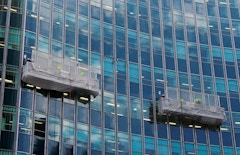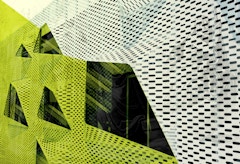
Renewing Historic Facades
As the first phase of a $4 billion dollar, 180-acre, 60 building government preservation project in Washington DC, this case study reviews the

As the first phase of a $4 billion dollar, 180-acre, 60 building government preservation project in Washington DC, this case study reviews the
Historical published weathered annealed failure data consisting of 13 samples were collected and glass failure prediction model surface flaw

Environmental and socio-economic benefits of sustainable preservation have become apparent most recently in the restoration of the historic former

Building design criteria requires that government buildings be designed for a variety of extreme loads including blast, hurricane, and impact

St. Patrick’s Cathedral’s Lady Chapel glass wall and the Trinity Church glazed canopy demonstrate that structural glass can be a great solution to improve the functionality of a historic building without competing with its original fabric.

Historically, the material advantages of aluminum have resulted in its widespread application as curtain wall framing. But amidst the 21st century push for increased energy performance, aluminum is also characterized by problematic thermal properties and a high-embodied energy profile.

The historical focus on reducing the carbon footprint of a building has recently shifted to include more emphasis on embodied carbon, the carbon

In 1888 the art historian Heinrich Wölfflin proposed the notion that the primary characteristic of baroque architecture is the illusion of movement.

This paper presents new historical research on the concrete facade of an important but relatively unknown and now demolished building by the American



To ensure the safety of U.S diplomatic personnel overseas, the U.S Department of State (DoS) has developed facade retrofits capable of resisting high



This paper will look at the different facades of the Elysian Fields apartment building designed by Warren Techentin Architecture [WTARCH] and

Special guests Uta Pottgiesser of TU Delft and Angel Ayón of AYON Studio Architecture and Preservation discuss their recent book, Reglazing Modernism, where they explore facade intervention strategies on Modern-era buildings through international case studies.

